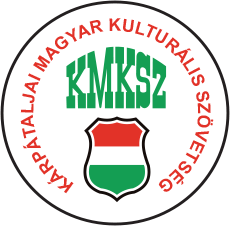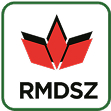Sub-Carpathia, Ukraine
Population
151,516 (based on 2001 census data)
About the community
The Hungarian population living in Sub-Carpathia constitutes the Hungarian community of Sub-Carpathia. Their numbers and situation have changed continuously throughout history, especially in the 20th century, when the region changed national borders several times, which had a significant impact on the lives of the local Hungarians.
Since the fall of communism, their population has been declining, mainly due to emigration and assimilation. Nevertheless, the Hungarians of Sub-Carpathia still constitute an important minority in the region. They have a rich cultural heritage, which includes language, folk customs, music and gastronomy.
The Hungarians of Sub-Carpathia face a number of challenges, such as restrictions on language use and education, economic difficulties and political participation. The armed conflict exacerbates the situation both directly and indirectly. Mobilisation, uncertainty and economic instability place an additional burden on the Hungarian community in Sub-Carpathia and contribute to increasing emigration trends.
The community's survival is supported by numerous Hungarian institutions (schools, kindergartens, cultural centres) and active organisations working to represent community interests and preserve cultural heritage.
History
The history of Hungarians in Sub-Carpathia as a minority began at the beginning of the 20th century with the break-up of the Austro-Hungarian Monarchy, when the territory became part of Czechoslovakia. During the Second World War, it briefly returned to Hungary, then in 1944 it was occupied by the Soviet army. The Soviet era (1944–1991) was a period of collective guilt, deportations and deprivation of human dignity for the Hungarians of Sub-Carpathia. This tragic period enabled the community to focus on survival and preserve its national identity and language, and it is here that the roots of national consciousness lie.
Ukraine's independence (1991) brought new hope for freedom and a more tolerant atmosphere. Economic difficulties, the transition after the collapse of the Soviet system, and the acquisition of the new state language, Ukrainian, presented challenges. At the same time, it became possible to strengthen national identity, cultivate the native language culture, and uncover the crimes committed by the Soviet dictatorship. Through the revival of civil and political self-organisation, organisations such as the KMKSZ were formed, and historical churches were also established. One of the greatest achievements was the founding of the Beregszász Hungarian College (now the II. Rákóczi Ferenc Carpathian Hungarian College) in 1996, which played a key role in the revival of the Hungarian intellectual class.
In the 2000s, Ukraine's western orientation strengthened, which on the one hand created opportunities, but on the other hand, with the rise of Ukrainian nationalism, led to a narrowing of minority rights. The 2014 Maidan revolution and the events that followed (Russia's annexation of Crimea, the war in eastern Ukraine) further exacerbated tensions. The Hungarian community experienced increasing discrimination and restrictions on their rights in the areas of language use and education.
The Russian-Ukrainian war that broke out on 24 February 2022 presented the Hungarians of Sub-Carpathia with new and serious challenges. As loyal citizens of Ukraine, their sole aim is to live in peace as Hungarians in their homeland, but this aspiration has become extremely uncertain due to the war. However, their historical experience and commitment give the community strength to continue their struggle for survival.
Legal background
The legal situation of Hungarians in Transcarpathia in Ukraine is constantly changing and has deteriorated significantly in recent years. The main problems arise in the areas of education and language rights.
The 2017 education and 2019 language laws introduced serious restrictions on the use of minority languages, limiting the possibilities for Hungarian-language education and public administration. This makes it difficult to preserve the community's identity.
Although Ukraine has made certain changes in the area of minority rights due to international pressure and its efforts to join the EU, these do not fully restore the previous rights.
The war that broke out in 2022 further exacerbates the situation. Mobilisation, uncertainty and economic difficulties place additional burdens on the community. Through political representation, the Cultural Alliance of Hungarians in Sub-Carpathia (KMKSZ) and other organisations are trying to represent the interests of Hungarians, but the situation remains extremely complex and uncertain.
The Hungarians of Sub-Carpathia have thus found themselves in a kind of "trap", where the struggle to preserve their national identity is taking place amid a crossfire of legal restrictions, the challenges of war and political interests.
Education
The structure of Hungarian-language education in Transcarpathia presents a mixed picture. Most institutions are state (municipal) maintained, but Ukrainian laws passed in 2017 and 2019 significantly restricted mother-tongue education.
As a result, the role of church and private schools operating with Hungarian state support has increased. These institutions (e.g. Reformed lyceums, Catholic schools) make it possible to maintain Hungarian-language education. In addition, the II. Rákóczi Ferenc Carpathian Hungarian College is the most important bastion of Hungarian-language higher education in the region.
Language rights
The language rights of Hungarians in Sub-Carpathia have been significantly curtailed as a result of the 2017 education and 2019 language laws. These laws severely restrict the use of Hungarian in public administration, services and education, making the use of Ukrainian practically mandatory in most official spheres. Although pressure from Hungarian diplomacy and the EU accession process have led to some easing of restrictions, minority rights have not yet been fully restored and the community's rights remain limited.
Culture
The cultural rights of Hungarians in Sub-Carpathia are guaranteed in principle, but in practice they face restrictions due to language laws. The enforcement of these rights and the preservation of culture are primarily supported by civil and church organisations, often with the support of Hungary.
One of the most important cultural institutions is the II. Rákóczi Ferenc Hungarian College of Sub-Carpathia, which is not only a centre of higher education but also a bastion of Hungarian culture and academic life. In addition, the Cultural Alliance of Hungarians in Sub-Carpathia (KMKSZ) and other civil organisations organise numerous events, exhibitions and traditional programmes.
Hungarian-language theatres, libraries and religious institutions also play a key role in preserving cultural heritage. The Illyés Gyula Hungarian National Theatre in Beregszász was founded in 1993 under the leadership of chief director Attila Vidnyánszky. Since 2009, the theatre has been known as the Sub-Carpathian Hungarian Drama Theatre. Since 2009, the theatre has been known as the Carpathian Hungarian Drama Theatre. The strength and dynamism of the Beregszász Theatre lies in the ensemble of its artists.
The Árpád Vezér Visitor Centre and Riding School in Tiszacsoma opened its doors in 2024 and has since provided a venue for numerous events. It is a multifunctional building complex: museum, conference rooms, riding school, petting zoo. The centre offers the following services: guided tours, horse riding, folk games, archery, carriage rides, event organisation, horse riding lessons.
Mass-media
TV 21 Ungvár plays a key role in providing information to Hungarians in Sub-Carpathia. It is 50% owned by the KMKSZ and, under the 2023 media law, is allowed to broadcast 70% Hungarian-language programmes. The channel offers more Hungarian-language content than the Ukrainian public service media.
In the print media, the weekly newspaper Kárpátalja is the largest Hungarian publication in the region in terms of circulation, and the oldest weekly newspaper, Kárpáti Igaz Szó, with a history dating back 105 years, also plays an important role in shaping opinion and building community.
In addition, the news portals Karpat.in.ua and Kárpátalja.ma, as well as Pulzus Rádió and Kárpátinfo.net, also contribute to providing the community with reliable information in their native language. All of these media outlets are able to publish with the support of the Hungarian state, but they do not receive state funding.
Political representation
Over the past 35 years, the Cultural Alliance of Hungarians in Sub-Carpathia has participated in all parliamentary and local elections with its own candidates. In 2006, as a result of the amendment to the electoral law, it established the "KMKSZ" Ukrainian Hungarian Party, which currently has eight representatives in the county council (together with the UMDSZ representatives) and a further 144 representatives in the city and district councils. The 5% electoral threshold does not allow the Hungarian community in Sub-Carpathia to have independent representation in the Ukrainian parliament.



